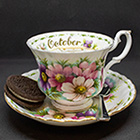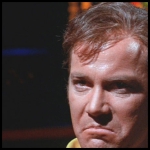Dear Supporters
My name is Alfred
I am watching your different examples on your rsd software and learn how to use it.
First I normally make a structure of the site. And therefor I have some questions.
This is something of how it should work once.
See attached Picture
1. I use links (button or text) to go to " The Problem" which is on the same page below, and so on
with all the other buttons. And for all the language a page.
How about the size of the used memory?
2. Each button gets its own page and how does the text changes the language?
3. What is easier to handle for the viewers?
Thanks a lot for your description
Kind regards
Alfred
Structure
Hi Alfred,
Most of us here are not actually supporters, we are just users, like yourself.
I'm not quite clear on what you are asking. Do you want to create a site in several languages? If so, I don't think RSD has the capabilities to do that for you, you can of course create the same pages and change the language yourself. Or it would be possible with some php and a database.
If you have links that go to something on the same page, you can use anchors, like create a div with an id, and let that be the target of your path.
Instead of just posting an image, it would be much better to actually see the site. It would probably be easier for us to understand. So, please post the URL.
Most of us here are not actually supporters, we are just users, like yourself.
I'm not quite clear on what you are asking. Do you want to create a site in several languages? If so, I don't think RSD has the capabilities to do that for you, you can of course create the same pages and change the language yourself. Or it would be possible with some php and a database.
If you have links that go to something on the same page, you can use anchors, like create a div with an id, and let that be the target of your path.
Instead of just posting an image, it would be much better to actually see the site. It would probably be easier for us to understand. So, please post the URL.
Ha en riktig god dag!
Inger, Norway
My work in progress:
Components for Site Designer and the HTML Editor: https://mock-up.coffeecup.com
Inger, Norway
My work in progress:
Components for Site Designer and the HTML Editor: https://mock-up.coffeecup.com
Alfred Maag wrote:
Dear Supporters
1. I use links (button or text) to go to " The Problem" which is on the same page below, and so on
with all the other buttons. And for all the language a page.
How about the size of the used memory?
2. Each button gets its own page and how does the text changes the language?
3. What is easier to handle for the viewers?
Dear Supporters
1. I use links (button or text) to go to " The Problem" which is on the same page below, and so on
with all the other buttons. And for all the language a page.
How about the size of the used memory?
2. Each button gets its own page and how does the text changes the language?
3. What is easier to handle for the viewers?
I believe all multi-language pages I have visited before either had separate domains for each language, or had separate structure of pages for each language. When a website is loaded, its just the page that is loaded. plus anything else that goes into the memory cache.
I am not sure what you mean by the 2nd question. To change the language, link to the new page with that language. You will have to provide the translation.
The easiest way for users are to use flag icons for each language. And English being the UK, not the USA. For instance, I use some software made in Germany. If I go to their webpage, its in German. At the upper right, they have an English flag icon, and the German flag icon - so I click the English flag icon to go to their English pages. If I visited the page, and I spoke neither English of German, I could use a page in a particular language for a page translator using one of the known languages from the icons. Having different domains might be costly, but for this company, they are trying to expand their product outside of Germany, so they have different domains (.com and .de). You webhoster might allow subdomains as a cheaper alternative. So you might have fr.site.com/index.html and eng.site.com/index.html.
I very often create sites in English, German and Norwegian. I have a folder for each language, so that the path would be something like www.site.com/en/index.html, www.site.com/de/index.html, www.site.com/no/index.html. I also use flags for navigation, but I darn well have to translate the text myself. 
Ha en riktig god dag!
Inger, Norway
My work in progress:
Components for Site Designer and the HTML Editor: https://mock-up.coffeecup.com
Inger, Norway
My work in progress:
Components for Site Designer and the HTML Editor: https://mock-up.coffeecup.com
Have something to add? We’d love to hear it!
You must have an account to participate. Please Sign In Here, then join the conversation.


